Baby carriers, wraps and slings come in a wide variety of styles and fabrics.
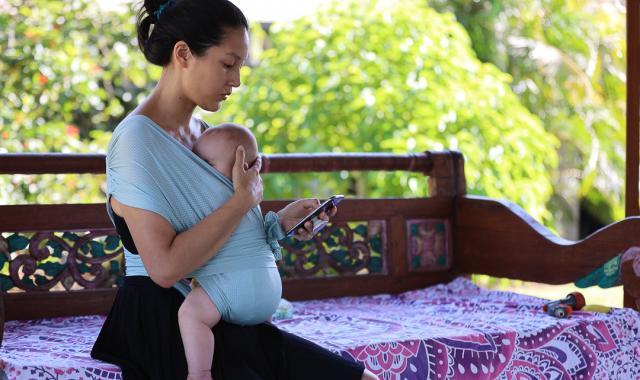
With so many great baby carrier options available, it can be helpful to understand how they differ and what to look out for when choosing.
This article looks at stretchy and woven wraps, ring slings, soft structured carriers and the Mei Tai. To keep it simple, we've used the term 'carrier' throughout.
When choosing a baby carrier, ensure it meets Australian product safety standards.
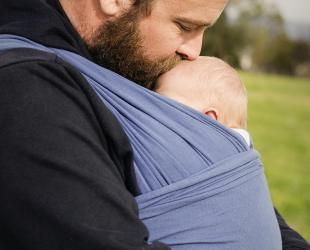
Wrap
A wrap is a long piece of cloth that ties around your body with your baby inside it. Wraps come in a variety of fabrics and thicknesses. Some are stretchy, others are made of woven material. Both types are suitable for holding a newborn baby securely against your chest. As your baby gets older, a woven wrap may offer a little more support under your baby's bottom. It can also be worn less firmly at the top giving your baby room to turn and look about.
Wraps are ideal for use by multiple carers. One size generally fits all and there are no straps or clips to adjust. There are many different ways to tie a wrap and it may take a few goes to get it ready to put your baby inside it.
If you will be carrying your baby through summer, think about whether you may find it too warm to have fabric wrapped around your back and shoulders.
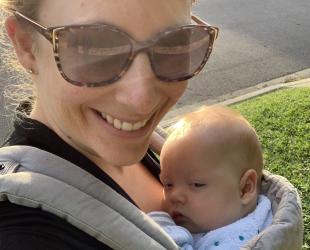
Soft structured carrier
The soft structured carrier comes in a wide variety of styles. They are usually padded with shoulder straps and a back panel, with or without a waistband. They generally use buckles or clips to fasten.
Most soft structured carriers can be adjusted as your baby grows and can be worn on your front or back. Some will have carrying positions for facing baby in and out. If your baby is very young, make sure that the carrier you choose is suitable for their size. You may need a special insert to keep your newborn baby well supported.
These carriers are usually quite simple to use. They are generally clipped around the wearer’s waist, then the wearer holds the baby against their chest while fastening the shoulder straps.
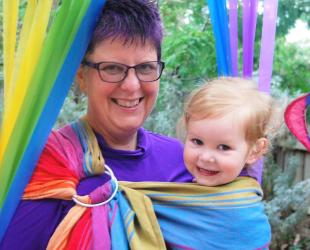
Ring sling
This type of carrier is made of woven fabric and worn on one shoulder. You put it on first, then open the fabric to create a pocket and place your baby inside. You can then gently pull the fabric near the ring to adjust the fit. The weight of your baby stops the rings from slipping.
Ring slings are very quick to put on and don’t usually require any tying because they are simply loosened and tightened to put baby in and out. They are also a good choice in hot weather as your baby is carried away from your front.
However some mums find a ring sling less comfortable if worn often or for long periods because of the pressure on one shoulder.
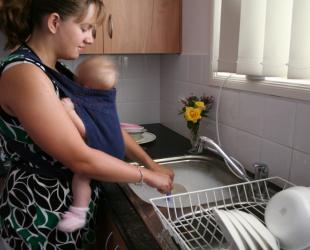
Mei Tai
This is a traditional style of carrier originating from Asia. They have shoulder straps and a waist band like a carrier but without any structure or padding. The straps might have adjustable clips or you might just tie them.
The Mei Tai is fully adjustable for use by multiple carers. Your baby can be worn on the front, back or side and they’re suitable for newborns through to older babies.
This type of carrier folds up small and is easy to stash in a bag when not in use.
When choosing a baby carrier, think about:
- How long do you plan to use the carrier? Some may best suit a young baby. Others will last through the first year or even longer.
- Who will use the carrier? Some carriers are a specific size and can't be shared between caregivers.
- How will you use the carrier and will you want to breastfeed in it?
- As your baby grows would you like the carrier to enable baby to face outwards?
- Are you open to having more than one carrier for different situations, ages and stages?
- What is your budget? There are options at most price points or you may prefer to hire or buy a used carrier.
- If you plan to share, choose a fabric colour and/or pattern that both you and other carers will be happy to wear.
Testing out a carrier
There are a lot of different styles of carriers and trying a few options first may help you choose. Visiting a store with multiple options or a baby wearing group is a great way to test out what will work best for your situation. You may be able to ask a friend to try out their carrier/s.
Safety
- Ask for a demonstration and then help as you try your baby in the carrier.
- Make sure you can put the carrier on and off without help and adjust any straps or buckles with one hand. THis may take practice
- The carrier should support your baby in an upright position with their chest against your body. Make sure baby's chin is up and away from their chest so they can breathe easily.
- Your baby should be close enough to your chin that you could easily kiss the top of their head.
- Your baby should be in a 'sitting' position with their legs spread, their thighs supported and their knees slightly higher than their bottom. This puts their hips in a more stable position.
Your comfort
- Some styles may suit your body shape better than others.
- Check that the shoulder and waist straps are wide and padded enough to be comfortable.
- Think about how the carrier will feel to you and your baby in warmer months. Light weight cotton is breathable and cool in hot weather.
© Australian Breastfeeding Association February 2025

